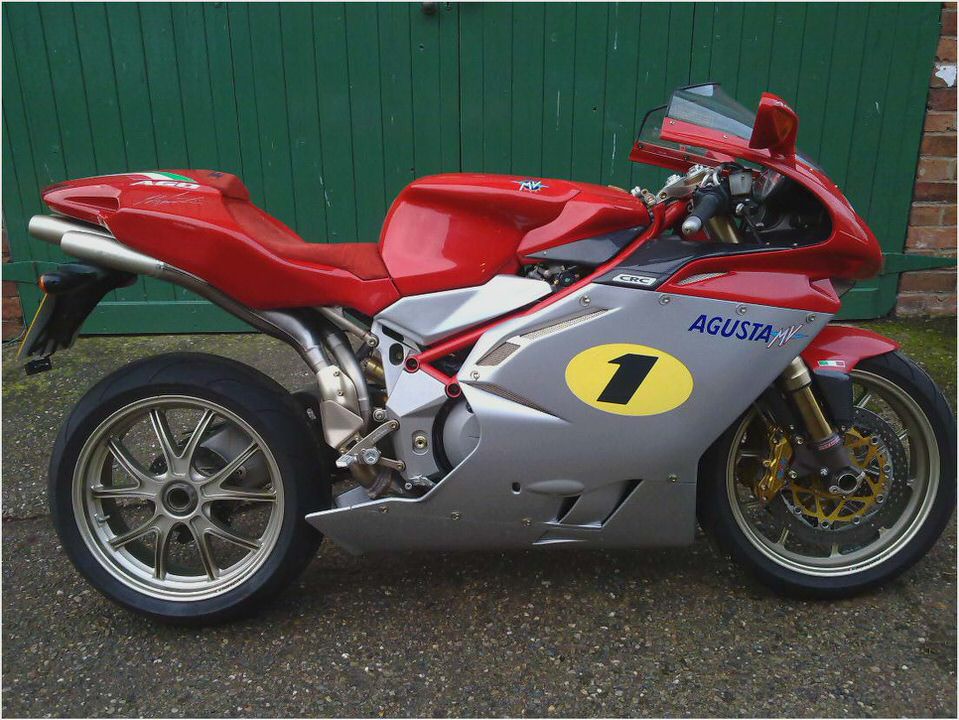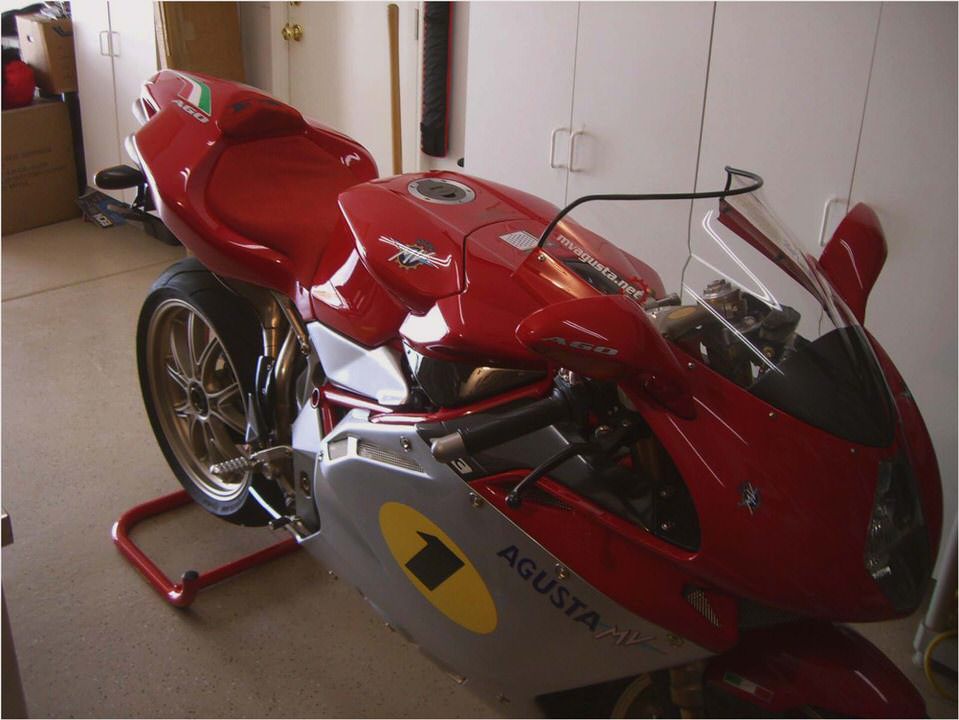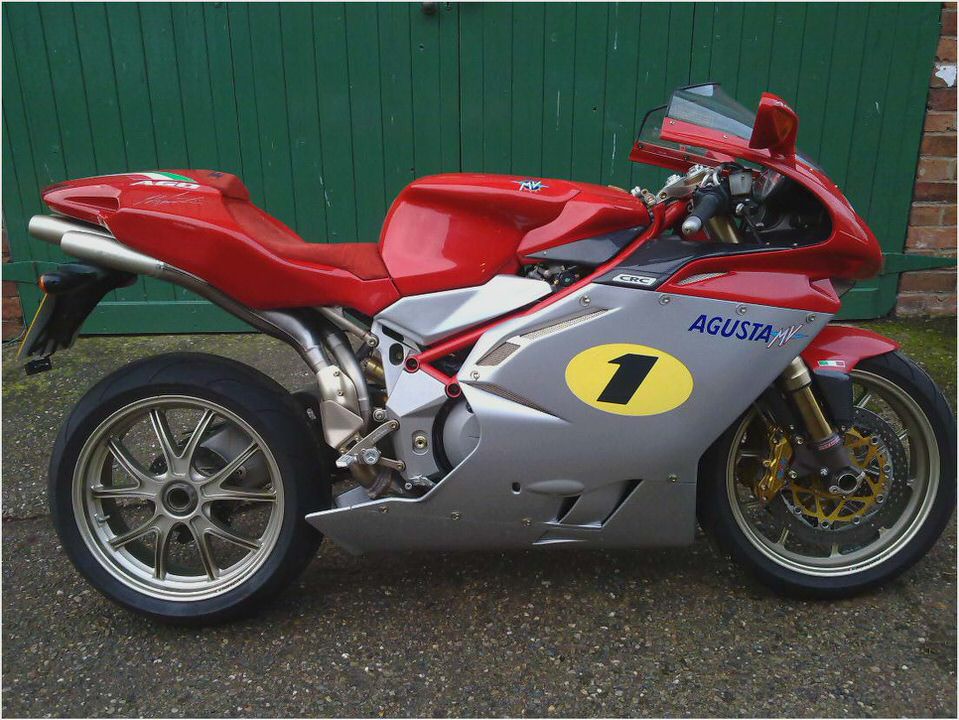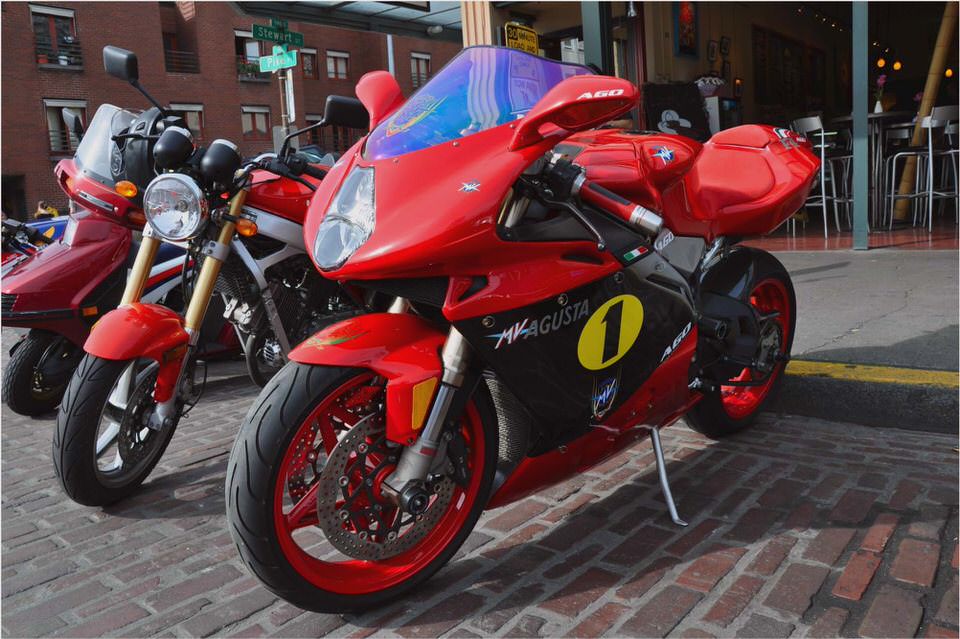2013 MV Agusta F3 675 | Review
2013 MV Agusta F3 675 2013 MV Agusta F3 675 2013 MV Agusta F3 675 2013 MV Agusta F3 675
2013 MV Agusta F3 675 2013 MV Agusta F3 675 2013 MV Agusta F3 675 2013 MV Agusta F3 675
MV Agusta F3 675 Test
Shortly before his untimely passing from cancer in 2011 at age 64, Claudio Castiglioni’s last project at his beloved company was to initiate development of the 675cc three-cylinder engine destined to power a new class of MV Agusta.
Not only did he get his dream project started, I think we can safely say he would be very gratified with the final result.
The MV Agusta F3 675′s gestation was not an easy one. MV sunk some $25 million into the development of an entirely new engine that echoes the racebikes that Giacomo Agostini rode to six consecutive world titles decades ago.
Besides the large chunk of cash, the impressively ambitious project must have been fueled by pure passion, because the logical answer to an entry level MV Agusta would surely have been a downsized version of the superb four-cylinder motor that currently powers the F4.
But, no, with 10 of the company’s 37 World Championships attributed to triples, MV Agusta’s glorious and incomparable history dictated a three-cylinder motor, and the clean-sheet design produced an incredibly compact, lightweight, oversquare motor (more so than the Triumph Daytona 675 powerplant), with class-leading power. The twist, literally, is the counter-rotating crankshaft that the entirely in-house team of engineers came up with. A crankshaft that spins backward is something we have only seen on Yamaha’s M1 MotoGP racebike.
A sophisticated electronics package includes the all-new MVICS (Motor Vehicle Integrated Control System) ride-by-wire engine management. Our test bike was on MV’s fourth version of the fuel map, which can be downloaded to all F3s at no cost to the owners. On earlier versions, the fueling wasn’t quite spot-on, making for somewhat jerky transitions when coming back on the gas.
As is de rigueur on exotics these days, the F3 comes with a choice of fueling maps for changeable conditions. Pressing the starter button once the engine is running will cycle through the four maps—Sport, Custom, Normal, and Rain Рwith the custom mode allowing the rider to independently adjust throttle response, maximum power output, speed of engine response, and engine braking, depending on his preference.
Eight levels of traction control are also part of the F3′s package, and a rubber covered toggle switch on the left bar allows adjustable interference on the fly. Bank-angle and rear-wheel speed sensors – optional from MV Agusta Special Parts – îmanage the take-offs and wheelies, clearly indicating the seriousness of MV’s World Supersport racing aspirations.
Sitting astride the F3, I was pleasantly surprised by the roomy cockpit and low seat height, which make the bike quite comfortable. The rearset footrests are not too high and, unlike the Brutale’s exhaust system that interferes with your right boot heel when turning in, the F3′s gorgeous triple exhaust tips don’t hamper your movements at all.
The instruments are all contained in the one central pod and it works well enough, but the tiny, skinny digits atop the sweep rev counter are impossible to read. Unless you are intimately familiar with the bike, you will only have a general idea of what the engine is spinning at. Fortunately, the cute little circular Traction Control indicator, gear position indicator, and speedometer are all reasonably readable.
The engine? It is a gem. Pulling away, first gear is so tall that some serious clutch slippage is needed to get going without a hitch.
Opening the throttle hard definitely produces brisk, if not actually startling, acceleration. The gearbox itself is smooth and works well, but the lever has quite a long throw to it. This makes the clutch-free MV Agusta EAS (Electronically Assisted Shift) a welcome option, as the manual shifter throw can be a little clunky and requires a deliberate foot movement.
So far, so good.
All seems well with the world of the F3 – until you hit 10,000 rpm (as close as I can tell) – when the 675cc triple hits its torque peak of 52 ft./lbs. and suddenly realizes its hair is on fire. Rev-limited at an amazing 15,000 rpm (high for a triple) thanks to a brief 45.9mm stroke, the rushing surge at ten grand rips the F3 along the tarmac until the claimed peak power of 126 horses is reached at 14,400 rpm.
Because of this wide spread of power, the F3 suddenly becomes very serious fun on a fast road (or track). The responsive engine definitely vibrates, but it is not overly intrusive. There is an intoxicating intake roar that is quite a bit louder than the sound from the pipes, and that just adds to the impression of warp speed achieved.


The all-new advanced chassis is a mixture of a steel tubing trellis, with aluminum side plates that tightly wrap around the super-compact motor and create a swingarm pivot point. The suspension is predictably fully adjustable – Marzocchi inverted 43mm forks and a Sachs Progressive piggyback shock looks after the rear.
At a featherweight 381 pounds (claimed, dry) the F3 675 is one of the lightest machines in its class, and the backwards-rotating crankshaft works very well at neutralizing some of the wheels’ gyroscopic forces. Handling is nimble in the extreme, and at the same time it is neutral and intuitive, with a secure feel even in very fast corners at maximum lean angle.
With a profile developed in World Superbike competition, the Pirelli Diablo Rosso Corsa tires offer flawless, full-disclosure feedback. With the rear tire sporting three compound composition zones – center rib, grooved out from there, and then slick-like edges – the Diablo Rosso Corsas are suitable for track and street. Line changes are accomplished easily, and the front end feels planted and confidence-inspiring, especially when hard on the brakes.
The front brake system is a mix-and-match of premium components. On the right handlebar, there is a radially mounted Nissin master cylinder that controls radially mounted Brembos gripping twin floating 320mm discs. A standard two-piston Brembo caliper slows a solid-mounted 220mm disc in the rear.
Rear-wheel chatter is absent thanks to MV’s electronic engine braking technology. Eschewing the more common mechanical slipper clutch, the F3′s engine management system opens the throttle butterflies just a tad when back-torque at the rear could be a problem. Choosing between Sport and Normal settings, I used the latter on the street and never encountered a problem – the system works well.
All things considered, the F3 675 is an adrenaline-junkie’s machine that’s fun and incredibly rewarding to ride fast. If you live above 10,000 rpm for any extended period – which is very easy to do – you will fall in love with the F3.
This motorcycle has been superbly designed and executed and, from a rider’s perspective, the MV Agusta F3 675 is a visceral experience that gives tons of feedback. Because of that, it is an intuitive machine to ride, and its prodigious power output feels way more muscular than any middleweight has a right to feel. MV Agusta has honored Castiglioni’s memory brilliantly.
Photography by Don Williams
This story is featured in the Mar/Apr 2013 issue of Ultimate MotorCycling magazine—available on newsstands and good bookstores everywhere. The issue is also available free to readers on Apple Newsstand (for iOS devices) and Google Play (Android). To subscribe to the print edition, please visit our Subscriber Services page.
Other articles you will enjoy:


- ABOUT MV AGUSTA MV Agusta South Africa
- The Grand Prix Motorcycle: The Official Technical History by Kevin Cameron…
- MV Agusta F4 AUTO VISION
- 2013 MV Agusta Brutale 675- First Ride Review
- Updated: BMW Buys Husqvarna From MV Agusta
